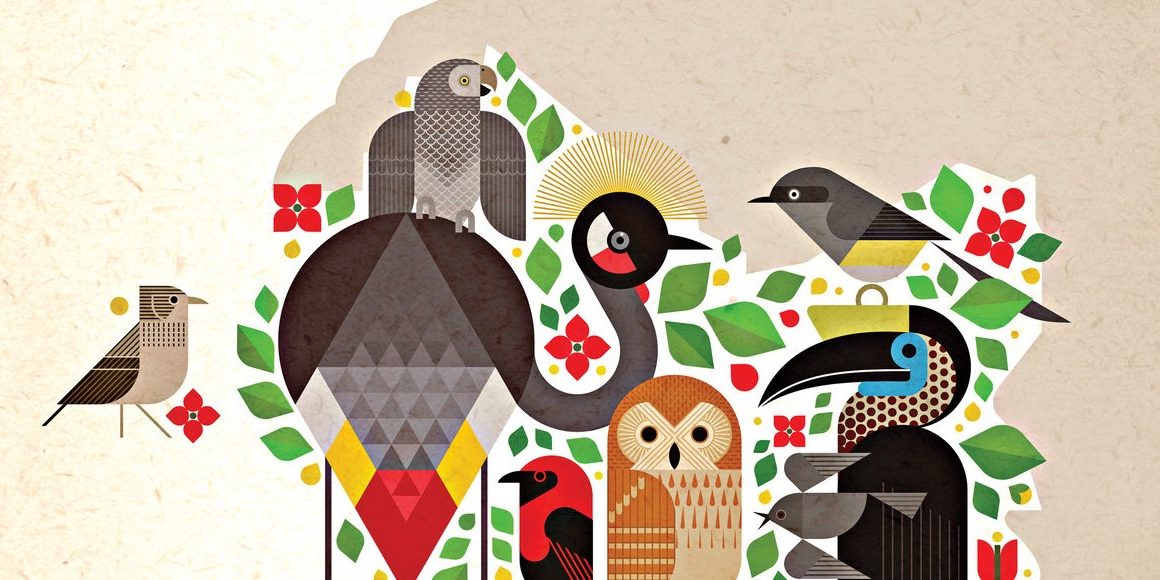Tope Bada
The Mysterious Beauty of a Birdsong!
Tinta regada
1 de agosto de 2024
The cacophony of sounds you hear in the forest are often distinct and unique but the loudest of all in this diffused symphony on verdant tapestry often belongs to birds.
I have often wondered while growing up in my agrarian community how our elders were able to make a distinction between which song belongs to a bird and what reasons or circumstances are responsible for the emotive reactions, we usually get from them at different moments or seasons in our rustic homestead. My childhood memories of the typical African bucolic community situated in beautiful landscapes interspersed with mountainous ranges and sweeping shrublands were rich with daily encounters with nature.
The elders were hunters and spent considerable amounts of time in the forest. They rise before dawn and return when the dusk has shuttered daylight.
They serve as fonts of knowledge and their deep familiarity with the ways of knowing is steeped in indigeneity and longstanding interactions with nature.
Their informal knowledge is diverse, and every encounter is blessed with oral reports and stories of exploits with the animate creatures around us. This pattern of imparting guidance is structured into communal gatherings after daily toils where we often listen to these tales by moonlight gathered at the communal forum.
The song of a bird is uniquely powerful and exceptional to different situations. At the dawn of the day, they sing mellifluously, when humans appear, they bellow out another tune and when the dusk settles, they crank out another ritornelle.
Oftentimes, we ascribe reasons to these songs because we do not understand the motives; is it a cry for love, hunger, help, pain, sorrow, or dirge? All we hear is a tuneful sound from a bird and we assume it is a song and not a cry for help.
Interestingly, there are humans that have spent considerable time in these conurbations of trees and understood the range and the emotion behind these sounds by birds. In dialogue with elders as we trek to farm, we hear commentary on the species of bird, the tonal sequence of the song and the reason behind the tune; a lost partner, a lost nest, departure of fledglings and desire for a partner. In all these, I have never heard a bird sing the song of another. Every bird has their song, and they never hassle to learn the song of another.
Humans are different and markedly superior to birds and our ascendancy gave us the primordial urge to learn, adopt, adapt, and evolve into new vernacular. So, it seems for a man to meet a stranger from another realm and seek commonalities through a channel of communication. In a way, we are like birds with our songs, our innate and evolutionary gift of tongue that we are socialized to adopt and accept as the norms for correspondence. Though birds will not learn another song, we humans do. We learn from other humans, we take on diction, syntax, phonology, and semantics and with time forget that there is beauty in our birdsong.
We adopt a new song and by subliminal yet hegemonical suggestions ascribe cultural discontinuity to our original song. Humankind is diverse and unique because we are custodians of our cultural capital in the mother tongue. A crowded mall or bustling marketplace should sound like an arcade of melodious registers from different languages.
My sojourn in the Midwest as I often traipse around the beautiful vista of Minnesota has been rampant with unique experiences of new bird songs. These new sounds are distinctive and bring to mind the cognizance that everywhere across the world, every land and clime has its own bird songs; the sounds that are inherently nature driven and emblematic.We owe posterity the responsibility to keep evolving by learning new songs but never to lose our distinctive identity and original song. We are guardians of these epistemological precincts and like the mysterious beauty of a birdsong, it is our heritage.
